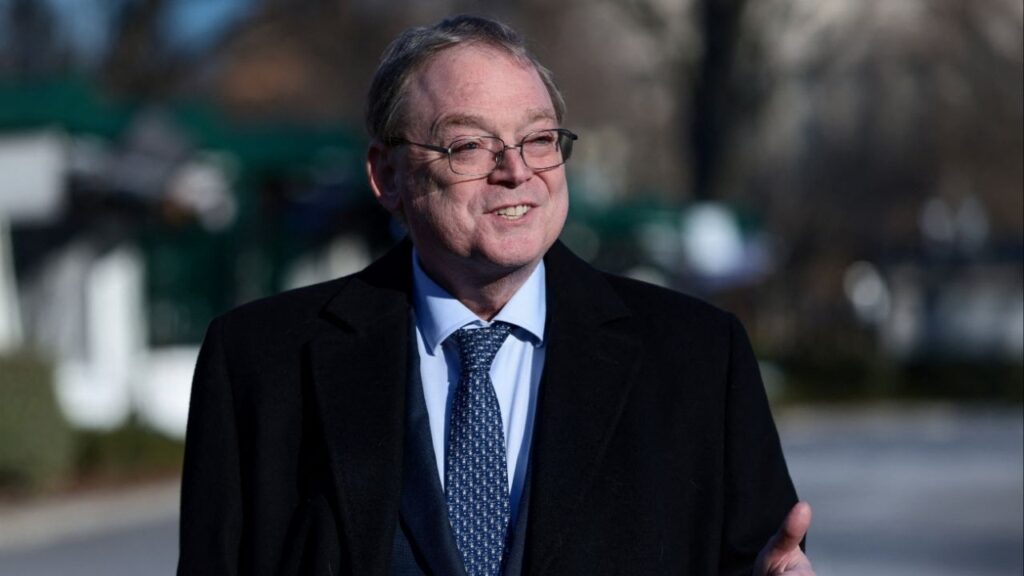Skyrocketing construction costs exacerbate California's affordable housing crisis, with some projects exceeding $1 million per unit. (AP/Michael Macor)

- California faces a severe housing shortage, especially for lower-income families, impacting the economy and homelessness.
- High interest rates, inflation, and red tape contribute to stagnant housing development and rising costs.
- Innovative solutions like modular construction and cost limits are needed to make housing more affordable.
Share
|
Getting your Trinity Audio player ready...
|
It’s not hyperbole to declare that California’s most serious economic, social and political issue is its chronic shortage of housing, particularly for families in the lower income brackets.

Dan Walters
CalMatters
Opinion
As the yawning gap between demand and supply, especially in urban areas, pushes costs upward, it drags down the economy by discouraging investment in job-creating businesses; it drives employers and their workers to other states where they can afford housing; it fuels the nation’s highest level of functional poverty and it’s the major factor in California’s worst-in-the-nation homelessness.
The state has pushed local governments to reduce impediments to housing construction, setting a goal of 2.5 million new units over the current eight-year planning cycle, or an average of more than 300,000 units a year, “and no less than one million of those homes must meet the needs of lower-income households.”
Related Story: Separating Fact From Fiction About California Homelessness
At best, California’s private and public housing developers are meeting a third of that goal, and the recent trend is downward. The state budget notes that in 2023 residential permits declined by 2.9% from 2022 to about 110,000 permitted units, and it projects that while single-family housing construction will probably pick up this year, multifamily units are expected to contract 5.5%, the largest annual decline since 2020.
High Interest Rates and Inflation Hinder Housing Development
The budget cites high interest rates, imposed by the Federal Reserve to combat inflation, as a major factor in the state’s stagnant housing picture. But inflation itself — the rising costs of building materials and construction labor — also is a problem, as is the tangle of red tape that projects must endure.
A project now underway in downtown Sacramento, just a couple blocks from the state Capitol, illustrates how high development costs affect supply. The decrepit Sequoia Hotel, originally built in 1906, is being transformed into 88 tiny units of housing — 150 square feet each — for homeless people, at a total cost of $50.1 million, with most of the money coming from the state. That’s nearly $600,000 per unit, more than enough to buy a detached single-family home in one of Sacramento’s middle-class neighborhoods, and close to $4,000 a square foot.
Sacramento is by no means an isolated example of the eye-popping costs of building housing for low-income Californians.
A similar project in downtown San Francisco, converting a fire-damaged building into 35 low-rent apartments, is costing a million dollars a unit, the San Francisco Chronicle revealed this week.
“Just five years ago, the cost to build affordable housing in San Francisco was only about $740,000 a unit, according to the Bay Area Council Economic Institute. But these days units are clocking in at $1 million or even higher, prompting the question of what can be done to bring down costs,” the Chronicle reported.
Related Story: Average US Mortgage Rate Slides to Lowest Level Since Late September
Innovative Solutions Needed to Reduce Housing Costs
What indeed?
Governmental projects, such as those in Sacramento and San Francisco, tend to have the highest costs because they must include all sorts of mandates, such as union-scale labor, and they depend on a pastiche of financing sources.
Private projects that needn’t follow those mandates can be done much less expensively, particularly if they consist of modules that have been assembled in factories and then joined together on the site. However, construction unions bitterly oppose such innovations and flex their political muscles to minimize their use.
Related Story: As US Home Sales Fall, California Expert Predicts Affordability Will Improve
A new $50 million housing fund created by Apple and private philanthropists will only finance projects that meet strict cost limits — less than $550,000 for studios and less than $700,000 for larger units. That’s still a lot of money, but it’s a step in the right direction.
California will never solve its housing crisis if it doesn’t get more — much more — bang for its bucks.
About the Author
Dan Walters has been a journalist for nearly 60 years, spending all but a few of those years working for California newspapers. He began his professional career in 1960, at age 16, at the Humboldt Times.
CalMatters is a public interest journalism venture committed to explaining how California’s state Capitol works and why it matters. For more columns by Dan Walters, go to calmatters.org/commentary.
Make Your Voice Heard
GV Wire encourages vigorous debate from people and organizations on local, state, and national issues. Submit your op-ed to bmcewen@gvwire.com for consideration.
RELATED TOPICS:
Categories



















